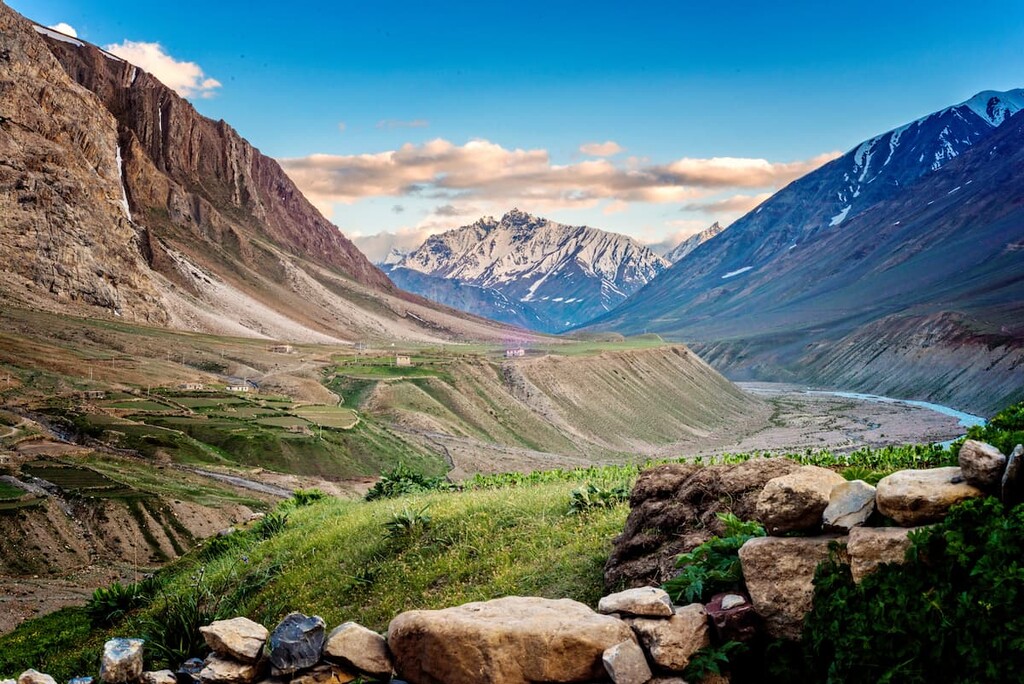Get PeakVisor App
Sign In
Search by GPS coordinates
- Latitude
- ° ' ''
- Longitude
- ° ' ''
- Units of Length

Yes
Cancel
Share ×

Scan the QR code and open PeakVisor on your phone
❤ Wishlist ×
Choose
Delete
With sprawling alpine zones and rugged Himalayan peaks, Great Himalayan National Park is one of the crown Jewels of India’s national park system. The park contains 7 named mountains, the highest and most prominent of which is Pyramid (6,230m/20,440ft).
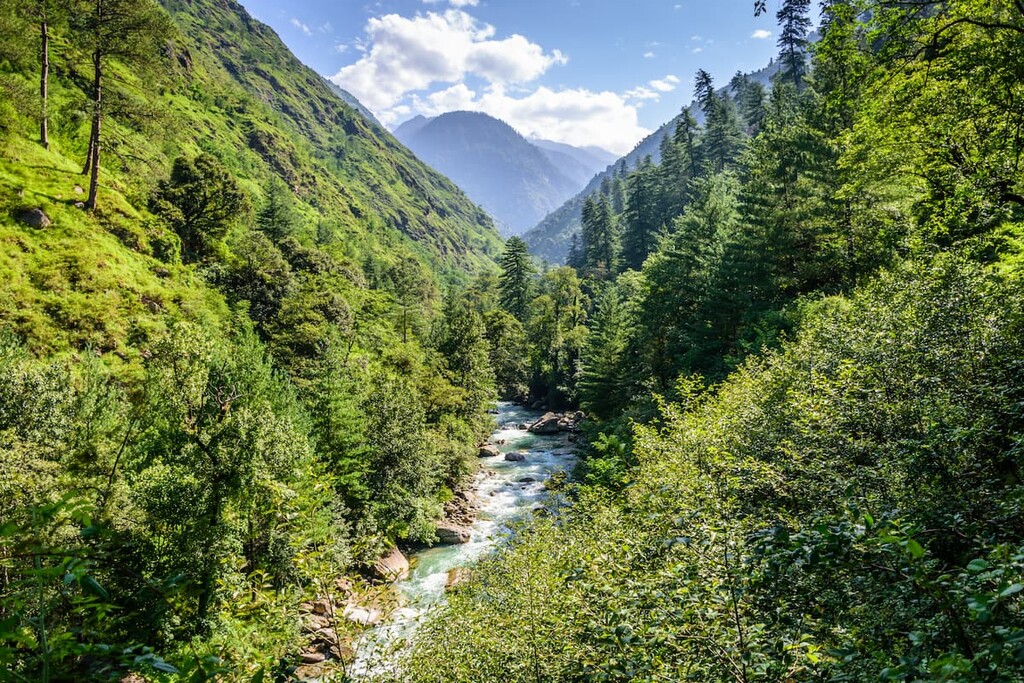
Originally designed to protect the stunning beautiful and fragile ecosystems of the mighty Himalaya, Great Himalayan National Park is a federally-protected region located in the Kullu district (कुल्लू जिला) of the state of Himachal Pradesh (हिमाचल प्रदेश) in the northern part of India (भारत), close to the country’s border with Tibet (China).
With a total land area of about 1,171 square kilometers (452 sq mi), Great Himalayan is one of India’s larger national parks. Indeed, it is slightly larger than nearby Khirganga National Park, yet slightly smaller than neighboring Pin Valley National Park.
Furthermore, Great Himalayan National Park is situated within a highly mountainous part of Himachal Pradesh, much of which is protected land. The park is located in close proximity to a number of other major parks and wildlife areas. This includes Pin Valley National Park (पिन घाटी राष्ट्रीय उद्यान) and Khirganga National Park to the north as well as a whole host of nearby wildlife sanctuaries, including:
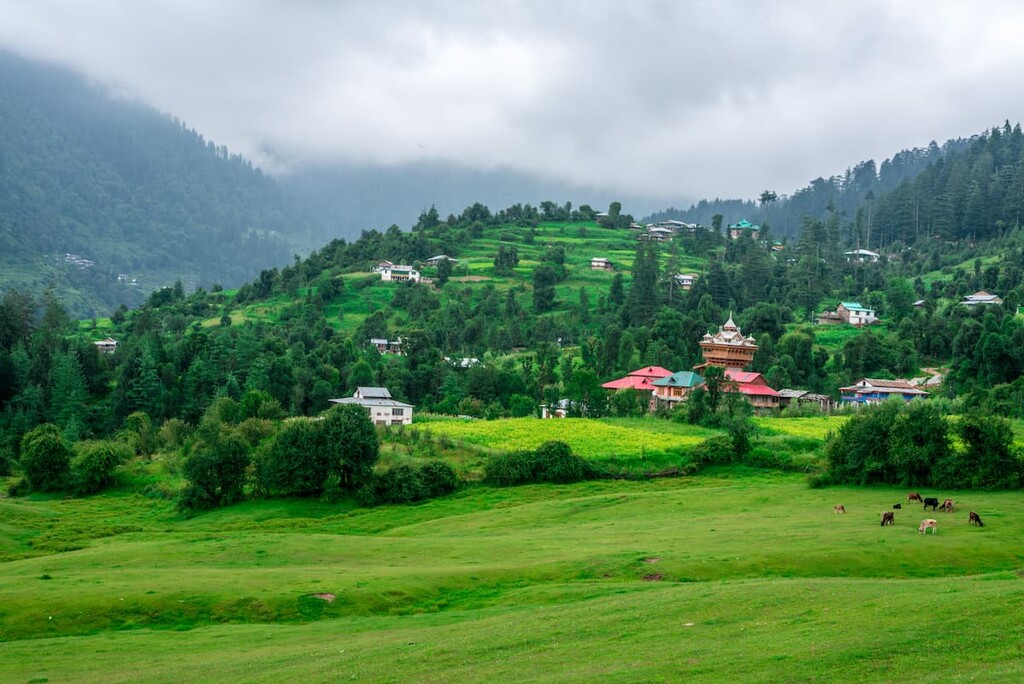
As the park’s name suggests, Great Himalayan National Park is home to the peaks of the mighty Himalaya (हिमालय).
The highest mountains on Earth, the Himalaya is a vast collection of peaks that stretches across south-central Asia, encompassing parts of Bhutan, Nepal, Tibet (China), Pakistan, and, of course, India.
The range itself started to take shape relatively recently in geologic terms as the Indian plate began colliding with the Asian plate. This collision led to a major mountain building event that created the Himalaya and still continues to this day.
Within the park, metamorphic rocks, such as schists, slates, and quartzites are by far the most dominant.
The mountains within the park, as well as the surrounding valleys, have also been extensively shaped and sculpted by the movement of glaciers over the last few tens of thousands of years. These glaciers helped to carve out many of the topographical features that we see today and there are still many glaciers to be found in the park’s highest slopes.
The park’s glaciers are actually of the utmost importance to local communities as meltwater from the glaciers and permanent snowfields in the mountains feed the rivers that supply drinking water to millions of people in Himachal Pradesh and elsewhere in India.
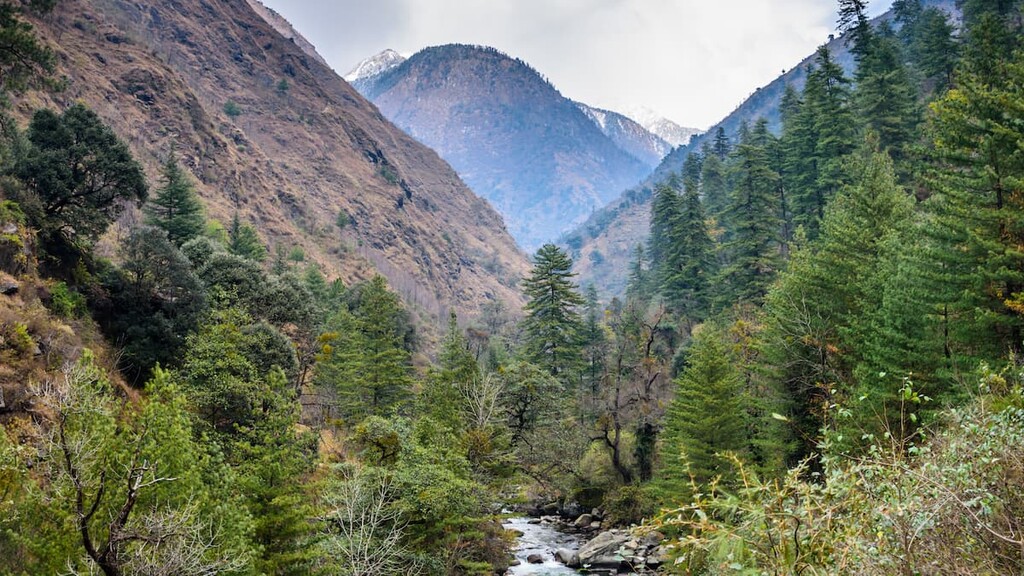
Indeed, the glacial rivers of Great Himalayan eventually flow into the Tirthan, Sainj, Jiwa Nal, and Parvati rivers, all of which feed the River Beas, which empties into the Indus River.
Major peaks in the park include Pyramid, Parabati South, Kullu Eiger, Gushu Pīshu, and Chakari.
One of the many things that makes Great Himalayan National Park so special is the region’s superb biodiversity.
In fact, the park is situated along the boundary of two very distinct biogeographical realms: the Indomalayan and Palearctic. As a result, the park is home to a plethora of flora and fauna, including 25 different types of forest ecosystems and an abundance of other biotic zones, particularly within the Western Himalayan Temperate Forests ecoregion.
According to UNESCO, the park also contains 805 species of vascular plants as well as more than 31 mammal species, 209 bird species, 12 reptile species, and 9 amphibian species.
Perhaps the most notable wildlife in the park include Himalayan brown bear, blue sheep (bharal), musk deer, Himalayan tahr, and the ever-elusive snow leopard. However, if you do get a chance to see any of these animals in the park, consider yourself lucky as close encounters can be difficult to come by!
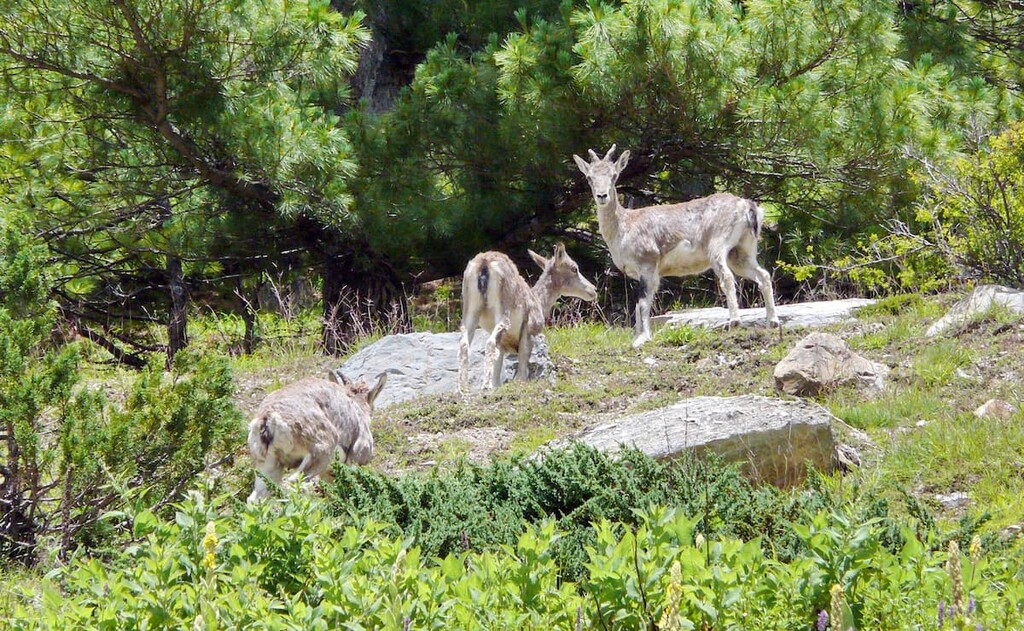
The land in and around what is now Great Himalayan National Park has been home to humans for tens of thousands of years. Indeed, the region has been documented in historic texts dating back to the early Middle Ages when the region was a hub for Buddhist monasteries.
Nevertheless, the park itself came to fruition after many years of work on behalf of scientists and local conservationists.
In the early 1908s, a group of international scientists working with the Himachal Wildlife Project first recommended the region for designation as a national park. Not long after, the state government also expressed an interest in creating a national park in the region, so they set to work creating commissions to assess the viability of the project.
Eventually, in 1999, Great Himalayan National Park was officially designated as a national park. As part of this designation, the local communities that traditionally had hunting and subsistence rights to the region were compensated for their loss of land.
During the 2010s, the park was officially nominated to be a UNESCO World Heritage Site. This began a long and arduous proposal of assessing the park’s suitability for this highly protected status. In 2014, the park was officially designated as a World Heritage Site, a status it continues to hold to this day.
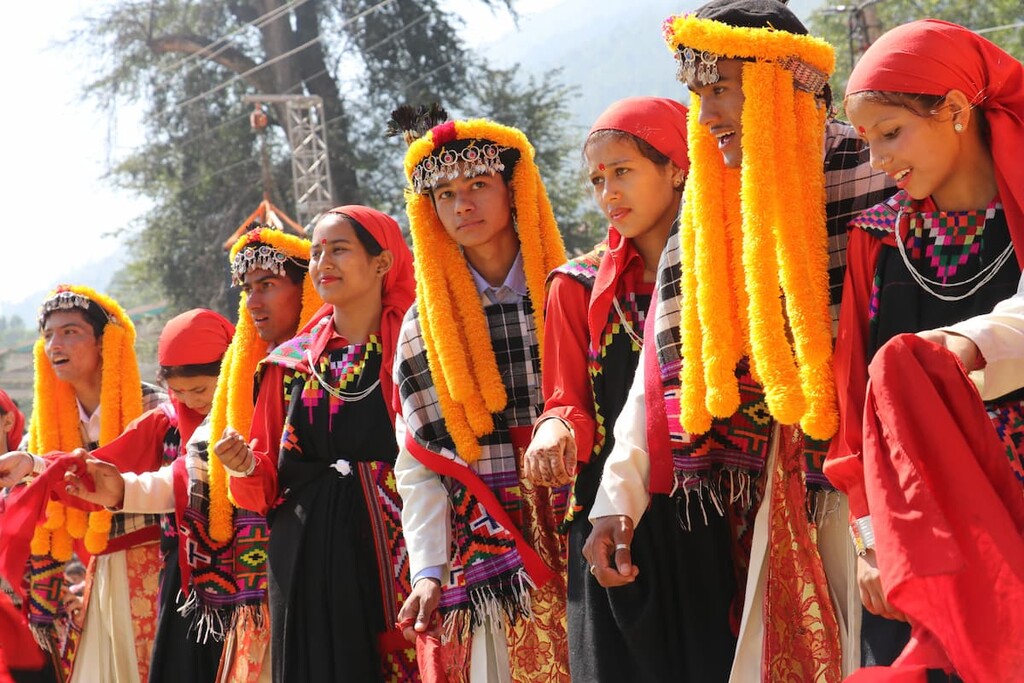
Nowadays, Great Himalayan is one of Himachal Pradesh’s premier outdoor recreation destinations. It is a haven for wildlife and a hub for trekking activity in the region, so it’s a must visit if you’re in northern India.
Great Himalayan National Park is known for its fantastic array of trekking opportunities. Most visitors to the region hire a local guide service for their trek. Doing so is a great way to support the local economy, and it’s a superb way to ensure that you don’t spend the majority of your trip dealing with difficult logistics and permitting issues in the park.
With that in mind, these are some of the most popular treks to consider during your next trip to Great Himalayan National Park:
For folks who want a casual adventure in Great Himalayan, the Rolla Trek is a sure bet. This trek takes most visitors about 2 days, so it’s a nice introduction to the park.
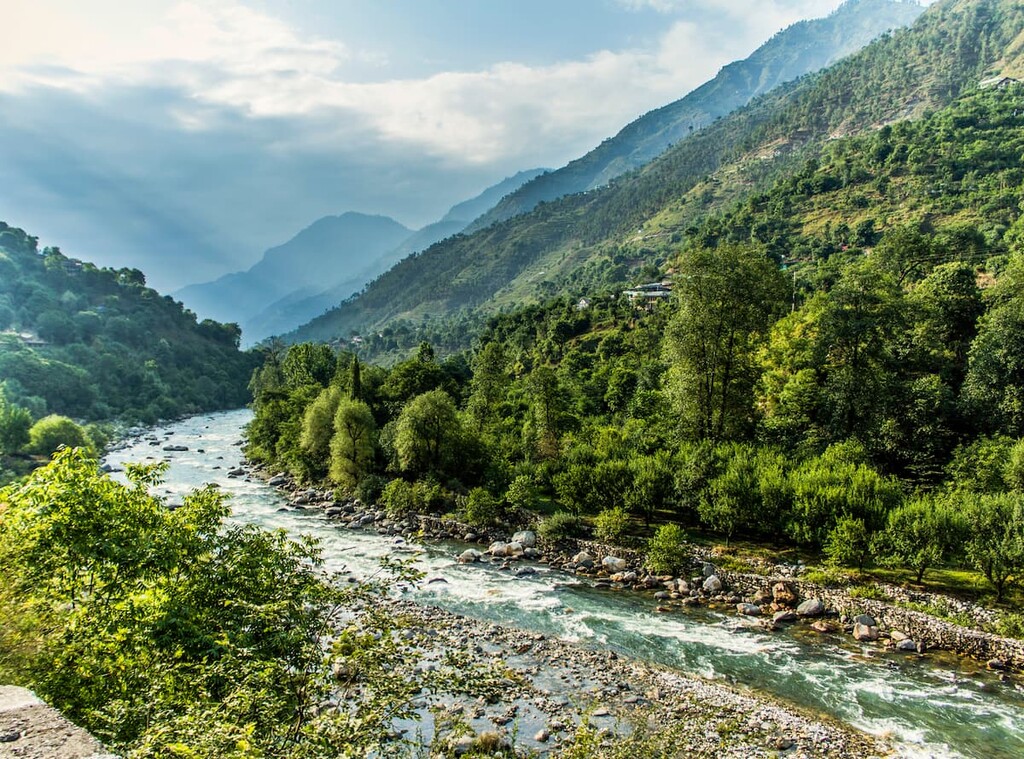
The Rolla Trek follows a casual mountain trail through the Tirthan River valley from Gushaini to the park’s entrance gate. From there, you continue steadily upward to Rolla, which is a collection of huts and campsites where you can stay for the night before heading back down the trail the next day.
A 2 day trek that offers spectacular scenery, the Rangthar Trek is a superb option for weekend visitors to the park. The trek starts at the village Pekhir, which was recently connected by road. So, most visitors take a jeep to the village and then start their climb from there.
Beyond Pekhri, the trail is steep but manageable as you make your way up to Rangthar where you can take in panoramic views of the region. If you have an extra day in your itinerary, you can extend your trek to the summit of Barchi where the views are even better.
If you’re looking to venture deep into the heart of the park, the Raktisar Trek is what you need. This 6 to 8 day long adventure starts off at the village of Niharni and travels through countless villages on the way to Raktisar, which is an amazing viewpoint that’s surrounded by glaciers and massive peaks.
Nevertheless, the Raktisar Trek is challenging, so visitors should be prepared for long days of hiking at elevations as high as 3,900 m (12,795 ft). However, if you’re up for the challenge, the Raktisar Trek can’t be beat.
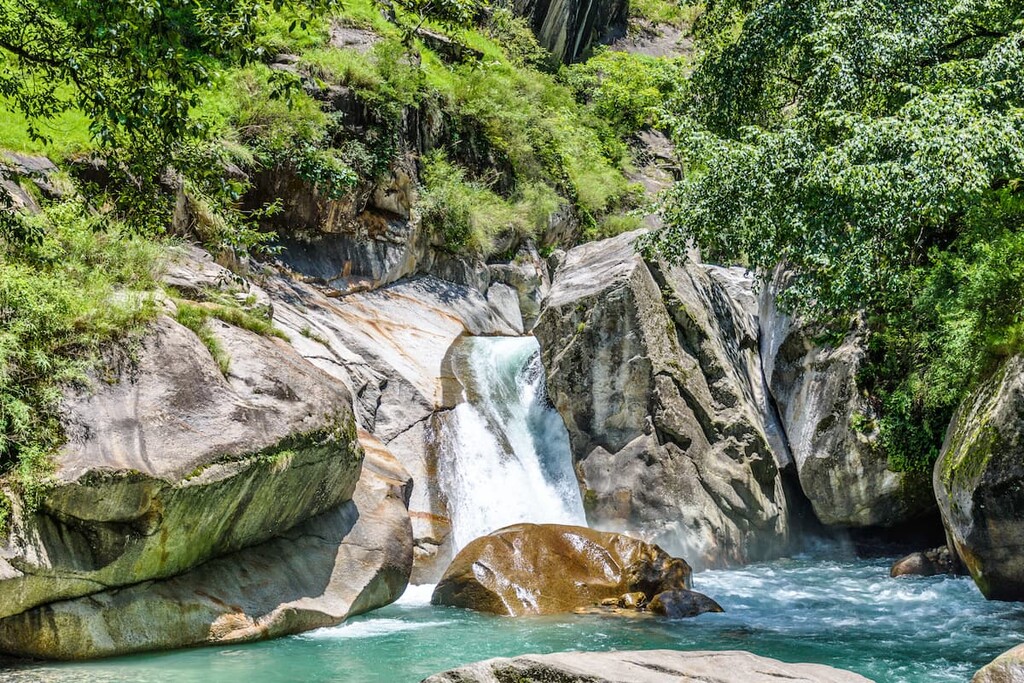
Looking for a place to stay near Great Himalayan National Park? Here are some of the best cities, towns, and villages to check out:
The community of Kullu is home to about 19,000 people. It is located just a short drive to the north of the park in the heart of the Kullu Valley along the banks of the Beas River.
Although the community is relatively small when compared to the big cities to the south, there is no shortage of things to do in Kullu. In addition to Great Himalayan National Park, visitors can also check out the many, many temples in the region, including the Bijli Mahadev Temple, Raghunath Temple, and Hidimba Temple.
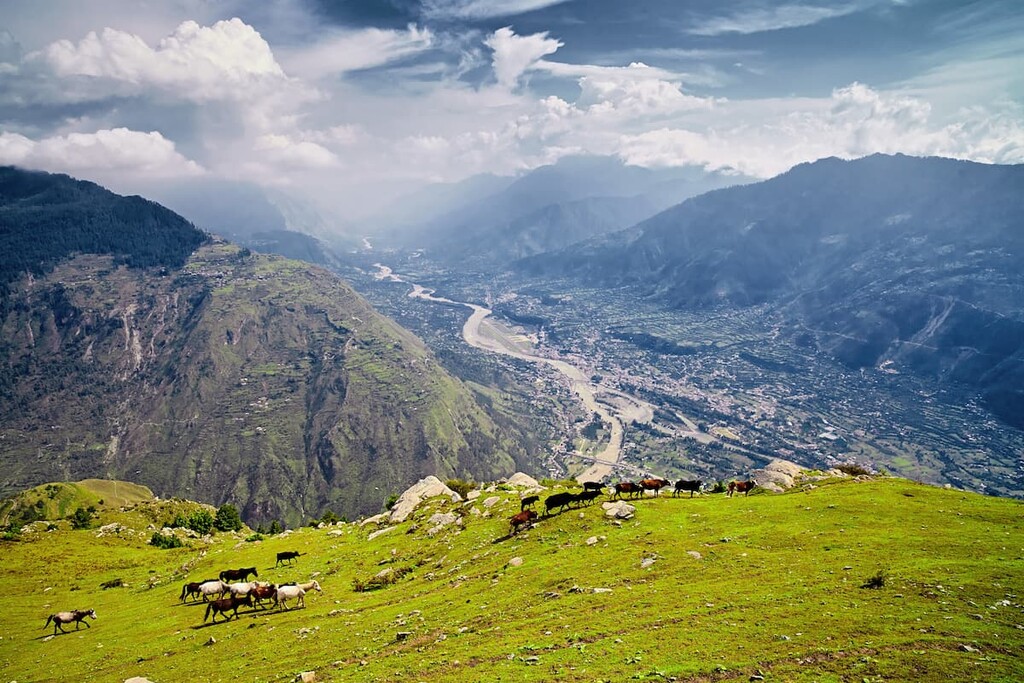
The town of Mandi is located approximately 2 hours to the southwest of Great Himalayan National Park. Mandi is home to about 27,000 people, which makes it one of the larger communities in the state.
Mandi is regarded as a fast-growing community. It has a strong economy that plays a major role in the economic prosperity of Himachal Pradesh. It is a center for trade and commerce in the region as it is a trading hub for the many agricultural commodities grown in this part of the state.
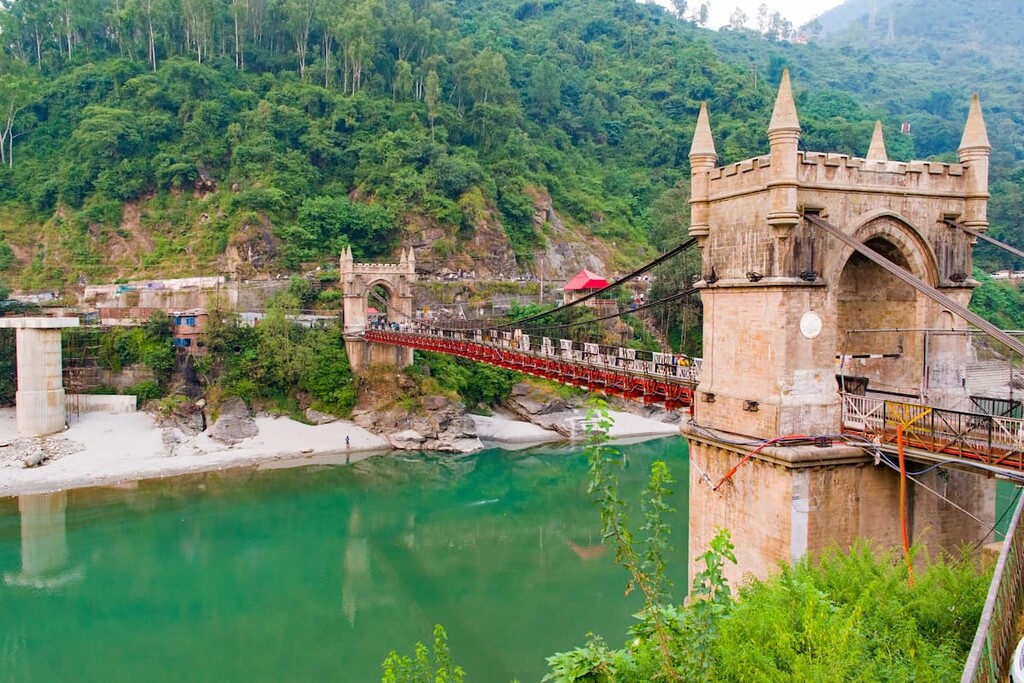
The capital and largest city in Himachal Pradesh, Shimla is a city of nearly 200,000 people that’s located about 6 hours to the southeast of Great Himalayan National Park.
Shimla was once the summer capital of British India before Indian independence. Nowadays, it is the cultural and financial center for the state. The state is also a hub for tourism in the region thanks to the many parks and outdoor recreation areas located throughout Himachal Pradesh.
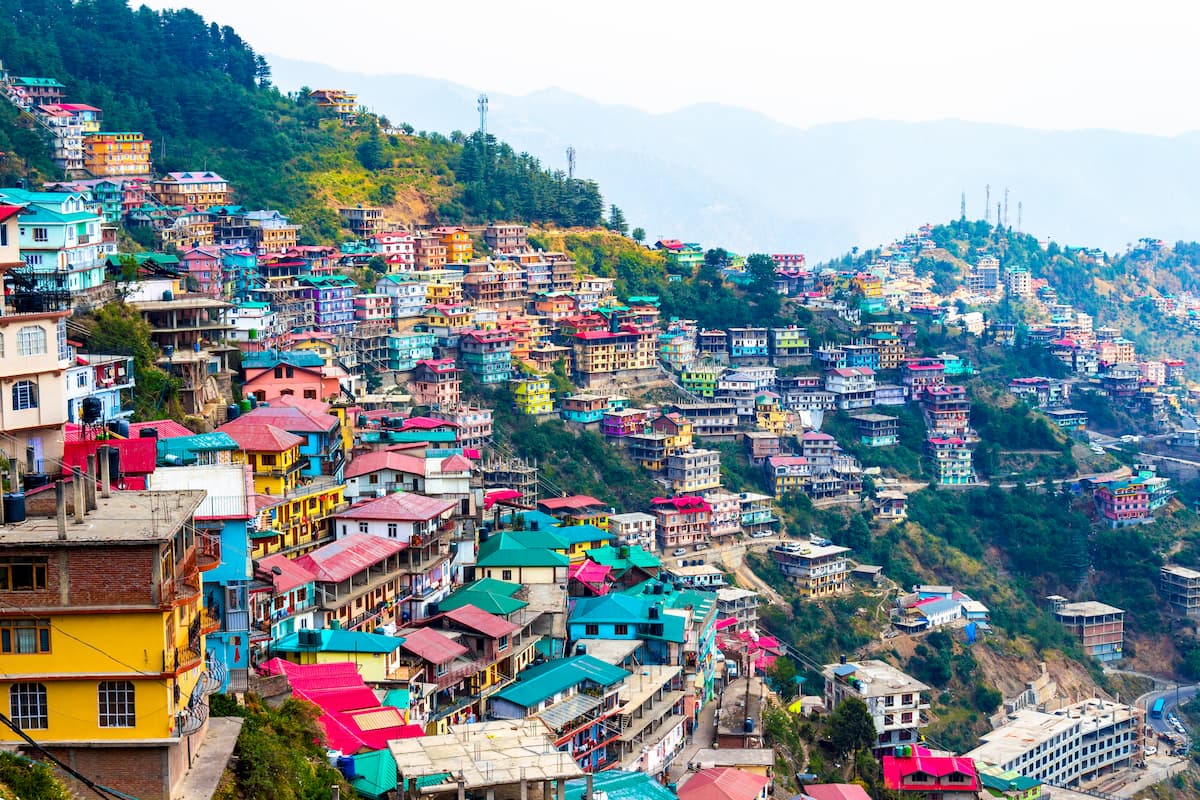
Explore Great Himalayan National Park with the PeakVisor 3D Map and identify its summits.



